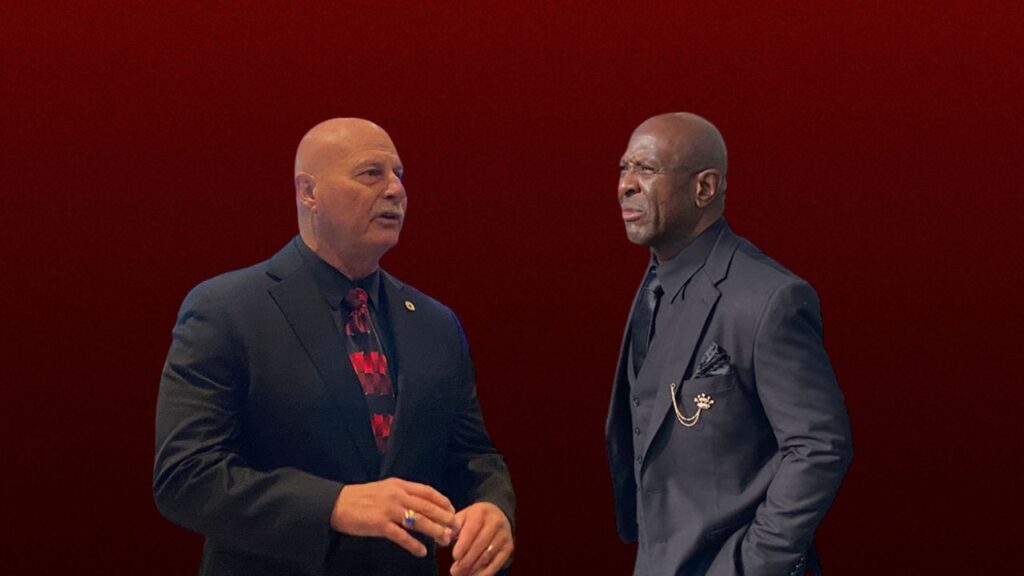Share
SACRAMENTO — California’s top energy regulators on Tuesday said the state is better prepared to avoid last summer’s rotating blackouts, but they cautioned the power grid of the nation’s most populous state is still vulnerable to extreme heat waves that could force more outages later this year.
State officials say they have acquired an additional 3,500 megawatts of capacity ahead of a likely scorching summer that threatens to increase demand beyond what the grid can handle. That includes an additional 2,000 megawatts of batteries designed to store energy generated from renewable sources — like solar — that stop working when it gets dark.
In general, one megawatt of energy is enough to power hundreds of homes, depending on how it is generated.
Blackouts Becoming More Common Due to Extreme Heat
“Does that mean we are in the clear? Not necessarily,” Elliot Mainzer, president and CEO of the California Independent Systems Operator, told state lawmakers during an oversight hearing Tuesday. “The most significant risk factor for grid reliability remains extreme heat, particularly heat that spreads across the wider western United States. And it continues to get hotter every year.”
More than an inconvenience, power outages during a major heat wave can also be deadly for vulnerable people while causing a host of other problems in a digital age that relies on electricity for everything from business transactions to Facebook posts.
Blackouts have become more common in California as utility companies will often intentionally turn off the power when it gets too windy in the dry summer months to prevent toppled powerlines from starting wildfires — like the one that killed 85 people and mostly destroyed the town of Paradise in 2018.
Buying Power From ‘Not Clean Sources’
But the blackouts in August were the first in nearly 20 years because of an energy shortage, putting California’s quest to have 100% of its energy come from renewable sources under more scrutiny.
“This summer will be an important test for the state,” said Assemblyman Chris Holden, a Democrat from Pasadena and chair of the Assembly Utilities and Energy Committee. “California is at the vanguard of renewable energy policy. The nation and the world are watching to see how we integrate renewables but also that we can ensure reliability while doing so.”
California’s plan to survive the summer includes buying power from places “that are not clean resources,” Marybel Batjer, president of the California Public Utilities Commission, told lawmakers on Tuesday. She did not say what those sources were, but she said regulators chose to buy them because they wanted to do everything they could to prevent blackouts this summer out of “health and safety concerns.”
“I want to be clear that our planning and implementation of our clean energy future progresses forward and will only accelerate in the months and years to come,” Batjer said.
Blackouts Could Cause Concerns for Newsom
Another round of blackouts could pose political concerns for Gov. Gavin Newsom, who will likely face a recall election later this year. In 2003, former Democratic Gov. Gray Davis was removed from office in a recall election largely driven by his handling of rolling blackouts, which were prompted by the deregulation of the energy sector and market manipulation by Enron and other companies.
Newsom’s recall election is driven largely by anger over his handling of the pandemic. But rolling blackouts, however brief, could hurt him as he seeks to inspire confidence in voters that he deserves to keep his job.
Energy demand typically peaks in the late afternoon as air conditioners work to cool homes during the hottest part of the day. Demand usually subsides at night as temperatures cool. But that didn’t happen in August, when temperatures were up to 20 degrees above normal for much of the western United States.
Demand was so high the weekend of Aug. 14 and 15 that state regulators ordered utility companies to intentionally turn off the power for some people to prevent more widespread outages across the grid, with outages lasting between 8 minutes and two-and-a-half hours.
Newsom declared a state emergency as state officials took drastic actions to find more power. That included David Hochschild, chair of the California Energy Commission, asking the U.S. Navy to use their diesel engines to power their ships instead of relying from on-shore power.
“There was a lot of things we had to do that none of us wants to do again,” Batjer said.



















